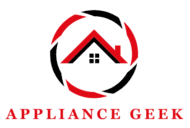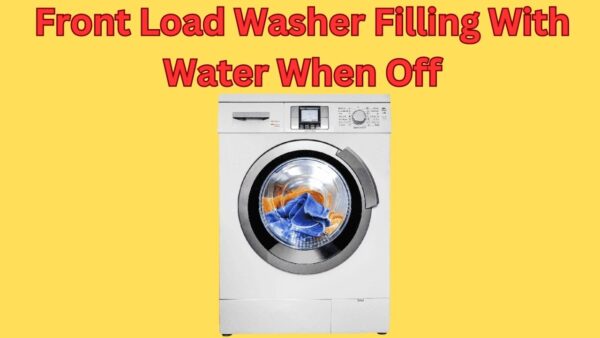A noisy washer that doesn’t agitate properly can be quite a nuisance and can disrupt your regular laundry routine.
The issue could be due to a variety of reasons – a faulty motor, a worn-out drive belt, or even a problem with the agitator itself.
This article provides you with 15 potential fixes for the problem, allowing you to troubleshoot and rectify the issue without any professional help.
Keep in mind that while these solutions are usually effective for most models, the specifics can vary depending on your washer’s make and model.
washer won’t agitate makes noise

1. Drive Belt Issues
Cause
The agitator in your washing machine may not function properly due to a worn or broken drive belt. This issue often presents itself through disturbing noise during the wash cycle.
This noise is a result of the belt struggling to maintain its grip on the pulleys as it becomes frayed or worn out.
Solution
Replacing the old drive belt with a new one usually resolves this problem.
It’s recommended to consult your washer’s manual for specific instructions or hire a professional service if you’re not comfortable with DIY fixes.
Regular inspection and maintenance can also help to prevent such issues in the future.
2. Motor Coupling Failure
Cause
The motor coupling is a critical component that connects the motor to the washer’s transmission.
When the washer is overloaded consistently or used heavily over time, the motor coupling can fail causing the washer to make noise and not agitate.
Solution
To rectify this issue, the damaged motor coupling needs to be replaced.
This requires disconnecting the washer from its power source, removing the drain pump and motor, and installing a new coupling.
This task, although achievable with the right tools and guidance, is complex.
Therefore, it may be advisable to seek assistance from a qualified appliance repair technician.
3. Agitator Assembly Problems
Cause
The most common cause of a washer making noise during agitation is a faulty agitator assembly.
This assembly comprises various parts, including gears and a drive shaft that work in unison to create the back-and-forth movement of the agitator.
However, if any of these components wear out or break, it can cause the washer to agitate inappropriately or create unusual noises.
Solution
A practical solution to a noisy agitator assembly is to inspect the agitator and its associated components.
If there’s obvious wear or damage, the faulty parts should be replaced immediately.
If the problem persists despite replacement, it might be necessary to replace the entire agitator assembly.
Always remember to unplug the washer before starting any repairs to avoid safety hazards.
4. Transmission Gear Damage
Cause
One of the main causes for a washer not agitating and making noise could be potential damage to the transmission gears.
These gears are integral to the functionality of the washing machine as they ensure the smooth operation of the agitator.
Over time, excessive use or overload can cause these gears to wear out or break, leading to distinctive noises and failure in agitator movement.
Solution
Addressing the issue of damaged transmission gears usually involves replacement rather than repair due to the complexity of the mechanism.
It’s recommended to seek professional help for this task, ensuring the right tools are utilized and the replacement is done correctly.
Regular maintenance and not overloading the machine can prevent such issues in the future.
5. Faulty Door Lock
Cause
A faulty door lock is a common issue that may cause your washer to not agitate and produce noise.
This happens because, for safety purposes, the washing machine is designed to not agitate unless the door is securely locked.
If the door lock mechanism is damaged or malfunctioning, the washer might wrongly interpret that the door is open, hence it won’t agitate despite the door being closed.
Solution
The solution to a faulty door lock is usually replacing the door latch assembly.
This process involves unplugging the washing machine, removing the spring latch from the door, and replacing it with a new one.
Ensure you order the correct replacement part according to your washer’s model.
It is recommended to hire a professional if you are not comfortable performing this task yourself.
6. Worn Out Drive Pulley
Cause
The drive pulley is the main part that drives the agitation of your washer. If it becomes worn out or damaged, you may start to hear a grinding or squealing noise during the wash cycle.
This is often the result of regular wear and tear, or overloading the washing machine, which puts undue stress on the pulley.
Solution
Replacement is the most effective solution for a worn-out drive pulley.
Depending on your level of expertise, you can either hire a professional or attempt the replacement yourself.
It’s key to ensure the replacement pulley is the correct model for your washer.
After installation, it is advisable to run a test cycle to ensure the noise has been eliminated and the washer agitates properly.
7. Damaged Motor Control Board
Cause
The motor control board provides power to the motor.
If it is damaged, it can lead to your washer not agitating and making noise.
This typically happens due to power surges, wear and tear over time, or due to the use of incompatible parts.
Solution
The solution to a damaged motor control board is to replace it with a new one.
Make sure to purchase a control board that is compatible with your washer model.
It’s highly recommended to hire a professional for this task, as mishandling could lead to further damage.
8. Faulty Timer Control
Cause
The timer control is a significant component of the washing machine that controls most of its operations.
If your washing machine is making noise but not agitating, there’s a possibility that the timer control could be faulty.
This typically results from wear and tear or electrical issues.
Solution
To address a faulty timer control, it is recommended to seek the assistance of a professional technician.
They can diagnose the problem accurately and determine whether the timer needs to be repaired or replaced.
It’s not advisable to attempt this fix yourself unless you have substantial knowledge in appliance repair, as incorrect handling of these electrical components may lead to further damage or potential safety hazards.
9. Lid Switch Malfunction
Cause
The lid switch is a safety feature that prevents the washer from agitating while the lid is open.
If your washer isn’t agitating and is making noise, it’s possible that the lid switch is malfunctioning.
This could be due to wear and tear over time, a loose connection, or a mechanical failure.
Solution
The solution involves inspecting the switch for any visible damage.
If the switch is physically damaged, it will need to be replaced. If the switch appears intact, you may want to use a multimeter to test it for electrical continuity.
If the switch does not have continuity when activated, it should be replaced.
It’s always best to consult with a professional appliance repair service to ensure the problem is accurately diagnosed and fixed.
10. Broken Washer Drive Block
Cause
The washer drive block requires a specific amount of torque to rotate the inner tub.
If the drive block becomes worn out or damaged, it may not provide the necessary torque, leading to a washer that won’t agitate but makes noise.
Excessive loading or years of operation can cause wear and tear on the drive block.
Solution
The solution involves replacing the faulty drive block. First, you’ll need to disconnect the appliance from the power source for safety.
Then, remove the agitator to access the drive block. If the drive block is damaged, it can be unscrewed and replaced with a new one.
it’s advisable to consult with a professional technician if you’re uncertain about performing this repair yourself.
11. Worn Out Clutch Assembly
Cause
A common cause for a washer that won’t agitate but makes noise is a worn-out clutch assembly.
The clutch assembly is designed to lock the wash basket into spin mode.
Over time, it can wear out or fail, either due to overloading or the aging of the machine. This wear and tear can lead to the washer making noises when it should be agitating.
Solution
The solution to a worn-out clutch assembly is replacing it. You can locate the clutch assembly at the bottom of your washing machine and replace it with a new one.
It’s recommended to hire a professional if you are not comfortable doing the task yourself.
Always remember to unplug the machine and follow safety guidelines while performing this operation.
12. Faulty Water Level Control Switch
Cause
The water level control switch is a key aspect of the washing machine’s operation.
If it’s faulty, it could send the wrong signals about the water level, causing your washer to make noise and not agitate properly.
A malfunctioning switch could overfill or underfill the tub, both of which could lead to noise and agitation problems.
Solution
To address this issue, you will first have to check if the water level control switch is indeed the cause of the problem.
This can be done by bypassing the switch and observing if the washer functions normally.
If it does, then the switch is indeed faulty. Replacement of the switch is usually straightforward.
Ensure you unplug the washer before starting work on it, and consult the manufacturer’s instructions or a professional if you are unsure how to proceed.
13. Damaged Drive Motor
Cause
One common cause of a washing machine making noise without agitating is a damaged drive motor.
This motor is responsible for rotating the machine’s drum. When it’s damaged or worn out, it may make unusual noises, and the machine may fail to agitate properly.
Solution
In the case of a damaged drive motor, the most effective solution is usually to replace the motor.
It’s a job best left to a qualified appliance repair professional.
They will be able to safely and correctly install the new motor, ensuring your washing machine returns to normal operation.
14. Inoperative Pressure Switch
Cause
An inoperative pressure switch can be a potential cause of a noisy, non-agitating washer.
This switch is responsible for signaling the washing machine to start or stop filling up based on the water level in the drum.
When the pressure switch malfunctions, the washer may overfill or underfill, leading to inefficient operation and unusual noises.
Solution
The solution to an inoperative pressure switch involves testing the switch with a multimeter for continuity. If the switch is faulty, it needs to be replaced.
Always ensure to disconnect the washer from the power source before embarking on any repair to avoid electrical hazards.
It’s recommended to enlist the help of a professional if you’re not familiar with such repairs.
15. Clogged or Broken Water Pump
Cause
The water pump plays a crucial role in a washing machine’s operation by draining the water from the drum.
If the pump gets clogged with lint, small pieces of fabric, or other debris, it may cause the machine to make unusual noises or, in some cases, stop agitating altogether.
Solution
Clearing a clogged water pump is a task that can usually be performed at home.
Start by disconnecting the machine from the power supply for safety. Next, locate the pump (usually at the bottom of the machine) and check for obvious obstructions.
If visible debris is present, remove it carefully. If the issue persists or the pump is broken, it may be necessary to replace it.
Always consult your machine’s manual or a professional if unsure.
Conclusion
In conclusion, a washing machine making noise but not agitating can be caused by several issues.
It might be a problem with the drive belt, the drive motor, or a worn-out agitator. The noise could indicate something caught in the washer’s drum or a damaged transmission.
It’s crucial to diagnose the problem accurately to resolve it. If you’re not confident with DIY repairs, it’s always a good idea to call a professional.
Regular maintenance can also prevent these issues, keeping your washer running smoothly and efficiently.
FAQs
Why is my washing machine agitator making noise?
Your washing machine agitator might be making noise due to worn-out or damaged components like the drive belt, motor coupling, or gearbox. Regular wear and tear or overloading could potentially cause these parts to malfunction.
What causes a washing machine not to agitate?
A washing machine may fail to agitate due to problems with the motor, a worn-out agitator, a damaged drive belt or coupler, or a faulty lid switch or timer.
These components can wear out or fail, limiting the machine’s ability to agitate properly.
Why is my washing machine making a clicking sound and not agitating?
Your washing machine may be making a clicking sound and failing to agitate due to a damaged or dislodged drive coupler.
A faulty coupler can cause the machine’s motor to run but not transfer movement to the agitator, resulting in a clicking noise.
Why does my washer spin but not agitate?
Your washer might spin but not agitate due to a faulty agitator component or a defective motor coupling, which fails to transfer the necessary motion for agitation while allowing the spinning action.
Whirlpool Washing Machine Making Loud Banging Noise on Spin Cycle
Samsung Washing Machine No Power No Lights
Kenmore Dryer Keeps Shutting Off
Whirlpool Washer Stops Mid Cycle
Whirlpool Washer Blinking Green Light
Kenmore Washer Lid Lock Flashing
Why Is My New Whirlpool Washer So Loud
Why Do Clothes Get Stuck Under Agitator
Dryer Taking Multiple Cycles to Dry
Whirlpool Washer Not Agitating Properly
Whirlpool Washer Stuck on Rinse
Whirlpool Washer Won’t Agitate but Will Spin
Bosch Washing Machine Tap Symbol Flashing
Whirlpool Washer Locked Light Flashing
What Causes a Washing Machine Pump to Break
Amana Dryer Stopped Working Mid Cycle
Washing Machine High-Pitched Noise
Front Load Washer Filling With Water When Off
Why Is My Amana Washer Stuck on Wash Cycle
Speed Queen Wash Spin and Lid Lock Flashing 3 Times


